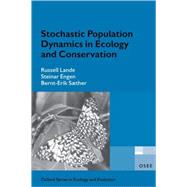Stochastic Population Dynamics in Ecology and Conservation
, by Lande, Russell; Engen, Steinar; Saether, Bernt-Erik- ISBN: 9780198525257 | 0198525257
- Cover: Paperback
- Copyright: 6/5/2003
All populations fluctuate stochastically, creating a risk of extinction that does not exist in deterministic models, with fundamental consequences for both pure and applied ecology. This book provides the most comprehensive introduction to stochastic population dynamics, combining classicalbackground material with a variety of modern approaches, including new and previously unpublished results by the authors, illustrated with examples from bird and mammal populations, and insect communities.Demographic and environmental stochasticity are introduced with statistical methods for estimating them from field data. The long-run growth rate of a population is explained and extended to include age structure with both deomgraphic and environmental stochasticity. Diffusion approximationsfacilitate the analysis of extinction dynamics and the duration of the final decline. Methods are developed for estimating delayed density dependence from population time series using life history data. Metapopulation viability and the spatial scale of population fluctuations and extinction risk areanalyzed. Stochastic dynamics and statistical uncertainty in population parameters are incorporated in Population Viability Analysis and strategies for sustainable harvesting.Statistics of species diversity measures and species abundance distributions are described, with implications for rapid assessments of biodiversity, and methods are developed for partitioning species diversity into additive components. Analysis of the stochastic dynamics of a tropical butterflycommunity in space and time indicates that most of the variance in the species abundance distribution is due to ecological heterogeneity among species, so that real communities are far from neutral.






